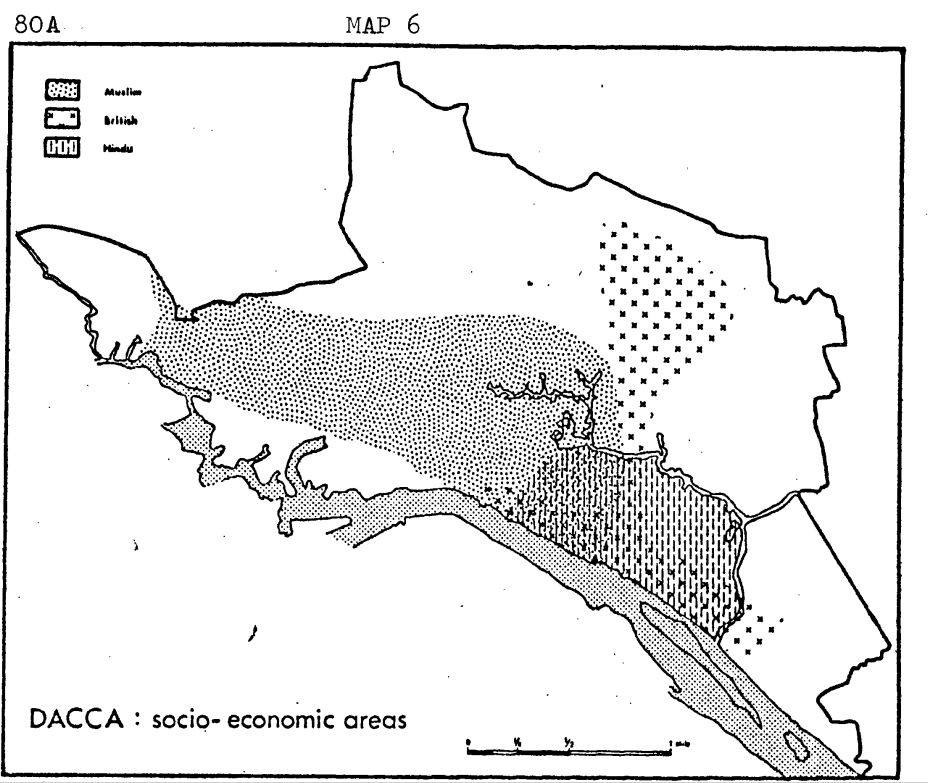Revati Mohan Das House
Location
The idea is to select exemplary representatives of distintinctive epochs or cultures in the history of Dhaka. Five distinctive houses from five different areas have been selected from the greater Dhaka Metropolitan area for this phase of the project.
Share with others
Sutrapur
Similar to Labagh and Shakhari Bazar, Sutrapur is one of the oldest neighborhoods of Dhaka. The area was once populated by carpenters (sutradhars) and their timber yards, and hence the name Sutrapur. It was in that area carpenters built boats for the Mughal navy and other parties. They also built household furniture, palanquins, and temple objects. The Dhaka administrator James Wise noted that in the 1890s there were about one hundred and fifty houses belonging to sutradharas. Other trades, such as button making, also flourished in and around making it a bustling area. The area was crossed by what came to be known as the famous Dholai Khal (canal), reputedly excavated by the Mughal Subedar Islam Khan in the 17th century, that was part of a wider network of khals with different names such as Babu Bazar Khal, Narinda Khal and Sutrapur Khal.


In her study, “Aspects of the urban history, social, administrative and institutional of Dacca city 1921-1947,” Nazia Khanum discusses the formation and rise of Sutrapur. Map 1 portrays the distribution of religious groups across Old Dhaka during the 1800s. It shows that the southern east portion of Old Dhaka along the Buriganga and Dholai canal areas were occupied by mostly Hindu traders. In Map 2, it can be seen that during the Mughal era, Sutrapur was an established locality along the Dholai Canal.
References:
1. রেবতী মোহন দাস. (১৯৩৪) আত্মকথাঃ শ্রী রেবতী মোহন দাস (রায় বাহাদুর) । অ্যালেক্সান্ডার এস. এম . প্রেস, ঢাকা।
2. Wise, James. (1883) Notes on Races, Castes and Trades of Eastern Bengal. Harrison and Sons, Printers in Ordinary to Her Majesty, London.
3. Haider, Azimusshan. (1967). Dacca: History and Romance in Place Names; An Analytical Account of the Nomenclature of Roads and Localities in Dacca, with a Discussion of the Rationale for Their Retention or Otherwise. Dacca Municipality, Dacca.
4. Khanum, Nazia. (1982). “Aspects of the Urban History, Social, Administrative and Institutional of Dhaka City, 1921-1947.” ProQuest LLC (ProQuest No: 11010587), PhD Thesis, University of London.
5. Haider, M. H. “Revati Mohan Lodge: Remnants of Opulence.” The Daily Star (19 March, 2019).
6. Siddiqui, H. Jubayer. (2021) “The Functional Evolution of Colonial Houses over the Years: A Case Study on Rebati Mohan House.”, Master’s Thesis, BRAC University.
7. Reza, A.T.M. Masood. (2008) “Study of the Development of Zamindar House, Dhaka Division.” Master’s Thesis, Bangladesh University of Engineering and Technology (BUET).
Exploring the house
A heritage building need not be a monument or landmark building; it can be representative of an epoch or period in the history of the city in many ways. Through this project, we have captured various perspectives in the form of virtual tours, timelines, stories, photographs, architectural features and locations.
Use the buttons belows to navigate to the details pages.
